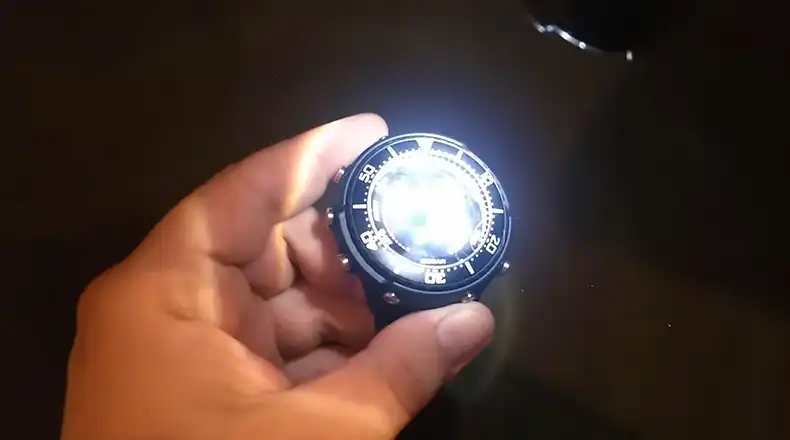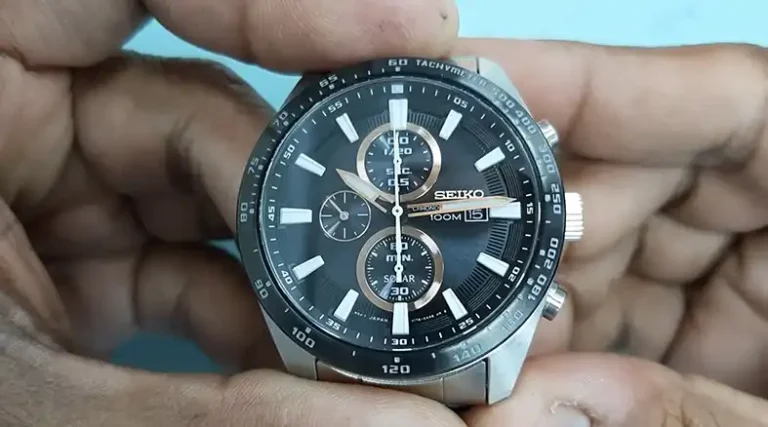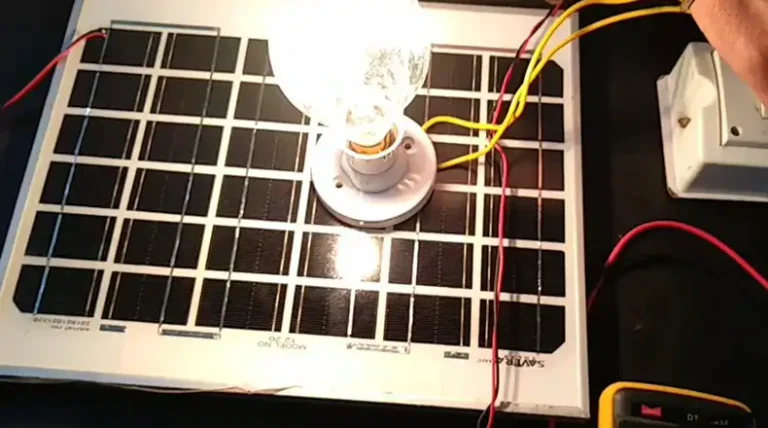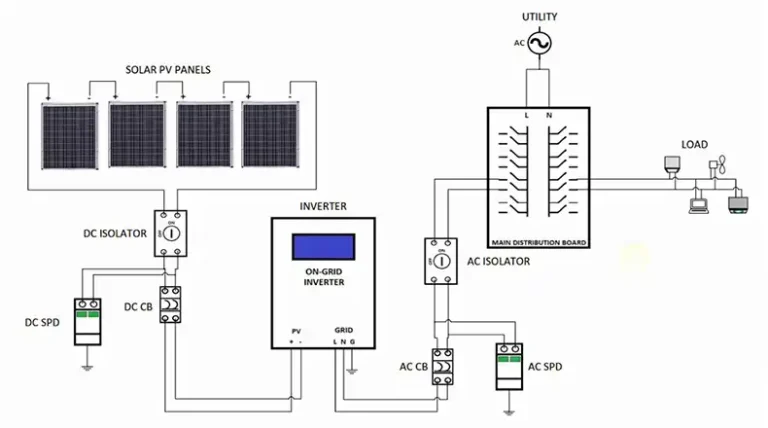Can LED Light Charge Solar Watch?
Solar watches rely on light energy to power their batteries and internal quartz movement. Using a solar cell panel, the watch absorbs sunlight during the day to convert into electricity, charging up the battery to run when not in sunlight. Many solar watches today also have power reserve capabilities to run for months even without additional light.
LED lights have become popular, energy-efficient lighting options, using up to 90% less energy than traditional bulbs. Their efficiency and intense directional light make them an intriguing option to potentially charge solar watches. With sufficient brightness in the wavelengths solar cells utilize, LEDs may be able to slowly charge a solar watch over time.
Charging solar watches with LED lights has some advantages but also big disadvantages versus sunlight. While convenient for indoor charging, LED light intensity is far lower, so charging times are very slow. And only specific LED types can provide usable light for solar cells. Comparatively, direct sunlight reliably delivers strong intensity light that solar watches capture and convert most efficiently to charge their batteries quickly.

Is It Possible to Power Your Solar Watch with LED Lights?
Sunlight is the natural fuel for solar watches, their tiny solar cells feasting on its rays to keep time ticking. But what happens when clouds roll in, casting shadows on your timekeeping companion? Can those bright, energy-efficient LED lights, illuminate our homes, step up and keep your watch powered?
The answer is yes, LED lights can charge your solar watch, but it’s not as straightforward as basking in the sun. Here’s the lowdown:
While LEDs emit plenty of light, their energy output differs significantly from the sun. Solar cells are tuned to the sun’s specific spectrum, making them most efficient at converting its rays into electricity. LEDs, with their varying wavelengths and color temperatures, charge your watch at a slower pace.
Not all LEDs are created equal. High-powered ones, typically those exceeding 1000 lumens, pack the punch needed for effective charging. Think task lighting or workshop bulbs, not the soft glow of bedside lamps.
Unlike the sun, which bathes your watch in its radiance, LEDs require closer proximity for efficient energy transfer. Place your watch directly under the LED source, ideally within a few inches, to maximize the charging effect.
While sunlight can top up your watch in a few hours, LED charging takes longer, often double or even triple the time. So, if you’re relying on LEDs regularly, plan for extended charging sessions.
Aim for LEDs with a color temperature between 5500K and 6500K, similar to daylight. This spectrum is closest to the sun’s, allowing your solar cells to work more efficiently. Cooler, blue-ish LEDs are less effective.
Regular, even exposure to LED light is key. Leaving your watch under an LED for a few minutes here and there won’t do much. Aim for sustained charging periods, like overnight or while you’re at work.
While LED lights can’t fully replace the sun as your solar watch’s primary power source, they offer a valuable backup option. Think of them as the knight in shining armor on cloudy days, keeping your watch ticking when the sun hides behind the clouds. Just remember, patience and the right LED setup are vital for a successful charge. So, the next time clouds gather, don’t despair! Grab a high-powered LED lamp, position your watch strategically, and let the artificial sunshine do its work. Your solar watch may not be basking in the sun’s glory, but it can still stay powered thanks to the helping hand of LED technology.
How a Solar-Powered Watch Works
While solar watches are a testament to innovative technology, their dependence on sunlight raises a vital question: how much light is actually needed to keep them ticking? Knowing this is essential for ensuring optimal performance and maximizing the lifespan of your watch.
The amount of light required for a solar watch to charge depends on several factors, including:
1. The type of solar panel: Different panels have varying levels of efficiency in converting light into energy. High-efficiency panels require less light to achieve a full charge compared to their less efficient counterparts.
2. Intensity of the light source: Sunlight provides the most intense and readily available source of light, promoting faster charging. Artificial light sources like LED lights, while helpful, typically offer lower intensity, resulting in slower charging times.
3. Duration of exposure: The longer your watch is exposed to light, the more it can charge. Even low-intensity light sources can provide sufficient energy over a longer period of time.
4. Battery capacity: Larger batteries require more energy to charge fully, necessitating proportionally longer exposure to light.
Here’s a general guideline:
- Sunlight: Direct sunlight for a few hours per day is sufficient to keep most solar watches fully charged.
- LED lights: High-powered LED lights placed close to the watch for several hours can effectively charge it.
- Room light: While not ideal, diffuse room light over an extended period can provide some charge, but may not be enough for full functionality.
It’s important to note that these are just general guidelines. The specific amount of light needed for your watch may vary depending on the factors mentioned above. It’s always best to consult your watch’s manual or manufacturer for specific recommendations.
The light requirements of your solar watch and adopting optimal charging practices, you can ensure its long-lasting performance and enjoy the benefits of this eco-friendly technology. Remember, while LED lights offer a backup option, utilizing the power of the sun remains the most effective way to fuel your timepiece and contribute to a greener future.
Determining the Required Light Intensity for Charging a Solar Watch
The amount of light needed to charge a solar watch varies depending on several factors:
1. Brand and Model
- Different brands and models of solar watches use different solar panel technologies and battery capacities, significantly impacting their light requirements.
- Some models are more efficient at converting light into energy, requiring less light exposure.
2. Light Source
- Sunlight: Sunlight is the most potent natural light source, offering the fastest charging times. Typically, 5-6 hours of direct sunlight exposure every month ensures optimal performance.
- LED lights: While less powerful than sunlight, high-lumen LED lights (1000 lumens or higher) can effectively charge most solar watches.
- Ambient Light: Even diffused light sources like window sills and overhead lights can contribute to charging, but the process will be slower.
3. Charging Distance
- The distance between the light source and the watch affects the amount of light reaching the solar panel.
- For LED light charging, maintain a distance of approximately 20 inches for optimal efficiency.
Here are some general guidelines for charging your solar watch:
- Direct sunlight: 5-6 hours monthly
- High-lumen LED lights: several hours weekly
- Ambient light: continuous exposure
Additional tips for maximizing your solar watch’s charging efficiency:
- Clean the solar panel regularly: Dust and dirt can impede light absorption and slow down charging.
- Store the watch in a well-lit area: Even when not wearing it, keeping the watch in a well-lit area helps maintain the battery level.
- Consult the manufacturer’s instructions: Each solar watch may have specific charging recommendations and requirements. Refer to the manual for optimal results.
By understanding the light requirements of your specific solar watch and adapting your charging habits accordingly, you can ensure it stays powered and ready to go for years to come.
Alternative Solutions for Solar Watch Charging
Sunlight, the natural fuel for solar watches, keeps them ticking like well-oiled time machines. But what happens when clouds roll in, casting shadows on your eco-friendly timepiece? Do you resign yourself to a powerless watch until the sun returns? Fear not, fellow sun-powered enthusiasts, for even when the skies are grey, there are alternative paths to keep your watch charged and ready for action.
1. Embrace the Artificial Sun: Solar Charger Units: Step into the world of dedicated solar charger units, miniature suns that mimic the sun’s intense light to directly recharge your watch battery. These units, often resembling small docking stations, emit concentrated light beams specifically designed to stimulate your watch’s solar cells, effectively replicating the sun’s charging power within the confines of your home.
2. Harness the Power of Incandescent Glow: While not as efficient as dedicated solar chargers, strong incandescent bulbs can also provide a helping hand in recharging your watch. Think desk lamps or task lighting, not the soft ambiance of bedroom lamps. Remember, the brighter the bulb, the better the chance of stimulating your watch’s energy-hungry cells.
3. Tap into the UV Spectrum: Some specialized UV lamps, primarily used for disinfection purposes, can also recharge your solar watch due to their emission of ultraviolet light. However, due to potential safety concerns and the inconsistent charging effectiveness, this option is best reserved for emergency situations.
4. LED Lights: A Viable, But Slower Option: While not as potent as their incandescent counterparts, high-powered LED lights can also contribute to your watch’s charge, albeit at a slower pace. Similar to incandescent bulbs, the key lies in proximity and intensity. Place your watch directly under the LED source for extended periods to maximize the energy transfer.
Pros and Cons of Charging Solar Watches Using LED Light
Advantages of Charging a Solar Watch with LED Lights
Backup Power Source: When sunlight is scarce, LED lights offer a readily available alternative to keep your watch charged. This is especially useful during cloudy weather, travel, or simply when you’re not near a window.
Controlled Environment: Unlike sunlight, LED light intensity and duration can be easily controlled. This allows you to tailor the charging process to your specific needs and avoid overcharging.
Safety and Convenience: LED lights produce minimal heat compared to traditional light sources like incandescent bulbs, making them safer for your watch. Additionally, their compact size and portability offer convenient charging options, even on the go.
Environmentally Friendly: As LEDs are energy-efficient, using them for charging reduces your carbon footprint compared to relying solely on sunlight.
Disadvantages of Charging a Solar Watch with LED Lights
Slower Charging: LED light intensity is generally lower than sunlight, resulting in slower charging times. This might not be suitable if you need your watch charged quickly.
Power Requirements: High-powered LEDs, necessary for efficient charging, consume more electricity compared to other light sources.
Positioning: To maximize energy transfer, your watch needs to be directly under the LED source for an extended period, which might be inconvenient or impractical in some situations.
Wavelength Mismatch: While LEDs emit light, their spectrum differs slightly from sunlight. This can lead to less efficient energy conversion by the solar cells, compared to natural light charging.
Overall, while LED lights offer a valuable backup option for solar watch charging, they cannot fully replace the sun’s efficiency and convenience. Consider factors like your watch’s battery capacity, charging time requirements, and the availability of sunlight before choosing this method.
Remember, the best approach to keeping your solar watch charged is to utilize a combination of sunlight exposure and, when necessary, LED charging as a temporary solution.
Pro Tips for Charging a Solar Watch Using LED Light
While solar watches offer a convenient and eco-friendly way to stay on time, relying solely on sunlight isn’t always practical. Luckily, LED lights can come to the rescue, keeping your watch powered even on cloudy days. However, maximizing the charging efficiency requires knowing the right tricks.
Selecting the Right LED Light: Not all LED lights are created equal for charging solar watches. Opt for high-lumen output LEDs, as they emit more light energy, directly impacting the charging speed. Look for LED bulbs with a lumen output of at least 1000 lumens for optimal results.
Positioning Matters: Simply placing your watch under an LED light isn’t enough. For optimal charging, position the watch face-up in a well-lit area where the solar panel directly receives the LED beam. Ensure no obstructions block the light path, as even small objects can significantly reduce charging efficiency.
Temperature Control: Extreme temperatures can negatively impact your solar watch’s battery and solar panel performance. Avoid charging your watch in direct sunlight or near heat sources like radiators or ovens. Similarly, don’t expose it to freezing temperatures for extended periods. Aim for room temperature for optimal charging conditions.
Regular Charging Habits: Just like any other rechargeable device, your solar watch needs regular charging for optimal performance. While sunlight remains the ideal source, LED lights can supplement your charging routine. Aim to charge your watch for several hours each week, especially if you wear it frequently. This helps maintain a healthy battery level and prevent unnecessary strain on the battery.
Monitoring the Charge: Most solar watches come equipped with a charging indicator, keeping you informed about the battery level. Stay vigilant and pay attention to the indicator to avoid overcharging or undercharging. Overcharging can damage the battery, while undercharging can reduce its capacity over time.
Additional Tips:
- Clean the solar panel regularly with a soft cloth to ensure maximum light absorption.
- Consider using a dedicated solar charging station for optimal charging efficiency.
- When using LED lights, maintain a distance of approximately 20 inches between the light source and the watch.
- Consult your watch’s manual for specific charging recommendations and precautions.
By following these tips and using the right LED lights, you can ensure your solar watch remains charged and ready to go, even when sunlight isn’t readily available. Remember, consistency and awareness are key to maintaining your watch’s health and maximizing its lifespan.
People Also Ask (PAA)
Q1: Can any LED light charge a solar watch?
A: No, the LED needs to emit enough usable light in the right spectrum for the solar cell to effectively charge the watch.
Q2: How long would I need to put my solar watch under an LED for it to charge?
A: It depends on the strength of the LED, but likely at least several hours under average LED bulbs to provide a minimal charge.
Q3: Do LED grow lights work to charge a solar watch?
A: Yes, LED grow lights designed for plants emit more intense light that solar watches can effectively convert to charge.
Q4: Can solar watches charge under normal indoor lighting?
A: Usually not enough to provide a meaningful charge. Some very intense indoor lights may slowly charge over time.
Q5: Is direct sunlight always better than LED light for charging solar watches?
A: Generally yes, sunlight provides stronger intensity light that solar watches capture best to charge quickly and efficiently.
Final Verdict
Specialized intense LED lights can slowly charge solar watches over time, but have limitations versus sunlight. Direct sunlight provides far higher intensity light that solar cells convert best for quick, efficient charging. Overall, LED charging of solar watches is generally constrained, needing very specific LED types and very long exposures to meaningfully charge compared to direct sunlight.



![[Explored] What Are the Drawbacks to Solar Tube Lighting?](https://www.itekenergy.com/wp-content/uploads/2023/07/What-Are-the-Drawbacks-to-Solar-Tube-Lighting-768x428.webp)

![What is Solar Charge Controller Max Input Voltage [Answered]](https://www.itekenergy.com/wp-content/uploads/2024/03/What-is-Solar-Charge-Controller-Max-Input-Voltage-768x428.webp)

